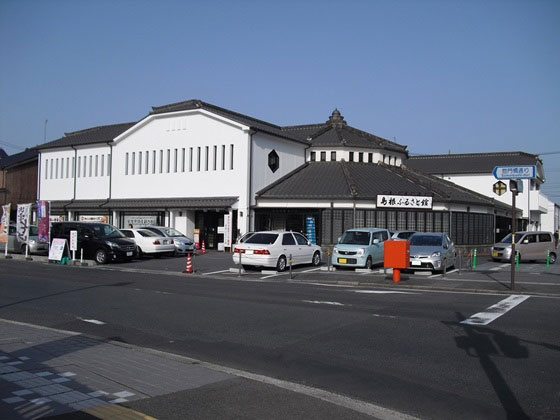 Photo:Shimane Perfecture
Photo:Shimane Perfecture
- Ceramic
- Shimane
Iwami ware Iwami yaki
Widely used throughout Japan as bottles for storage
Excellent cold and breakage resistance, low water absorbency
Description
What is Iwami ware ?
Iwami ware (called Iwami yaki) is a type of pottery produced around the city of Gotsu, Shimane prefecture. Iwami ware is strong, has low water absorbency and is resistant to salt, acid, and alkali which makes it suitable for storing pickled plums and pickled scallions. This craft is also known for large water jugs called handou, and many small pieces for daily use, such as tea utensils and tableware are also produced. Iwami ware uses locally collected, high quality clay that is similar to porcelain. Their main products are those coated with deep dark reddish-brown kimachi enamel, which contains iron, as well as transparent enamel products using yunotsu stone, which contain alkali components. Pieces are made ocher colored by coating them with transparent enamel and baking with oxidized firing where the flame is completely combusted, while blue products are created when baking through reduction firing with a flame of incomplete combustion.
History
Iwami ware is said to have started being made when warriors dispatched for the Japanese invasions of Korea (1592-1610) returned to Japan, bringing back Riroushi, a Korean potter, and having him produce pottery in what is now the city of Hamada and the village of Kakinoki, Shimane prefecture.
In Gotsu, Shimane prefecture, authentic porcelain manufacturing was taught in 1765, and the production technology for small ceramics such as bowls and sake bottles was inherited by Rokuro IRIE, a potter invited from the Iwakuni domain (Yamaguchi prefecture). The production method of large ceramics such as water jugs is said to have started when potters from Bizen province (Okayama prefecture) visited Gotsu in the 1780s.
At the end of the Edo period (1603-1868), the chief retainer of the Hamada domain (now Shimane prefecture) promoted increased ceramics production, which led to the whole Gotsu area to grow into a major base of pottery production centered on water jugs.
Production Process
- 1. Mixing
After excavating the raw clay material for ceramics production, lumps sized around thirty to forty centimeters are left to dry for six months or longer so that the clay becomes easier to disperse in water in later steps. Drying makes toxic substances contained in the original clay easier to dissolve in water and remove.
- 2. Dehydrating levigated clay
After producing muddy water by dispersing clay in water, the grit, sand, and pebbles are removed. Then, the muddy water is dehydrated with a machine and poured into a bowl, where it is naturally dried until the moisture content reaches about twenty-five percent.
- 3. Chrysanthemum kneading
The clay is kneaded outwards using both hands, air bubbles inside the clay are removed, and moisture is spread evenly throughout the clay. As a result of the spiral kneading movements, the clay ends up resembling a chrysanthemum which is why this method is called kiku neri, "chrysanthemum kneading". Once the kneading has been completed thoroughly, the clay is divided to the size being used on the lathe, and air bubbles are completely removed by kneading the clay more.
- 4. Molding on the lathe
After the chrysanthemum kneading, the clay is placed on the lathe and is shaped using a bamboo ladle and the palm of the hand. The clay is molded on the lathe, with slab techniques, or by hand depending on the type of pottery being produced. After being planed, the pieces are dried. With Iwami ware, a technique is used for producing large jugs that can hold up to seventy-two liters, where an artisan pulls a rope wrapped once around the feet of a lathe while another artisan is doing the molding work. A stake is set in the ground to avoid slipping when the rope is pulled.
- 5. Drying
Pieces that have been molded are aligned in an orderly way and dried.
- 6. Bisque firing
The unglazed pottery pieces are strengthened and baked at around 800℃ to make it easier to apply enamel.
- 7. Glazing
The suitable enamel for each product is selected and applied. One of the enamels used is an enamel of which the main material is kimachisabi stone from the region.
- 8. Dipping
For small ceramic pieces, the foot of the product is held and they are dipped into buckets containing enamel.
- 9. Loading pots into the kiln
The glazed pottery is neatly lined up inside the kiln.
- 10. Firing
The inside of the kiln is set to a high temperature of around 1250℃ to 1280℃ and the pottery is fully baked. Pieces baked at high temperature have low water absorbency and excellent strength. After firing, the pottery is naturally cooled and then carefully removed from the kiln before a final inspection is performed.
Facility Information
Shimane Bussan Kankokan
 Photo:Shimane Perfecture
Photo:Shimane Perfecture
-
Address
-
Tel.+81-852-22-5758
-
ClosedAround the New Year
-
Business Hours9am to 6pm
-
Website
Other Ceramic
- Imari ware/Arita ware
- Hasami ware
- Kutani ware
- Mashiko ware
- Shigaraki ware
- Bizen ware
- Hagi ware
- Koishiwara ware
- Mino ware
- Tobe ware
- Tokoname ware
- Karatsu ware
- Kasama ware
- Satsuma ware
- Iga ware
- Mikawachi ware
- Agano ware
- Otani ware
- Obori-soma ware
- Tsuboya ware
- Aizu-hongo ware
- Shodai ware
- Echizen ware
- Akazu ware
- Tamba-tachikui ware
- Yokkaichi-banko ware
- Izushi ware
- Kyo ware/Kiyomizu ware
- Iwami ware
- Amakusa ceramics
- Seto-sometsuke ware
- Sanshu Onigawara Crafts































































































































































































































































































